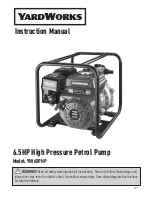Summary of Contents for 1500-Series
Page 14: ...xiv Table of Contents ...
Page 32: ...1 18 Introduction ...
Page 50: ...2 18 Installing the HPLC Pump ...
Page 84: ...3 34 Installing Options and Accessories ...
Page 108: ...4 24 Preparing for Operation ...
Page 160: ...A 14 Safety Advisories ...
Page 184: ...C 16 Solvent Considerations ...



































